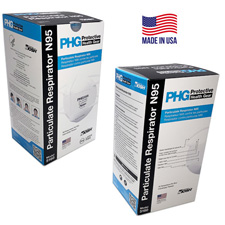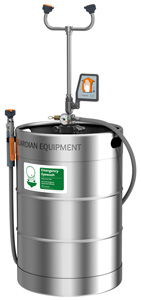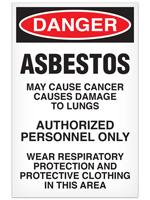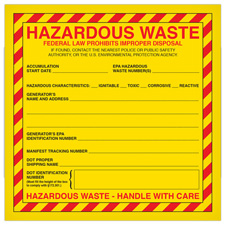| The Home page of ILPI's Safety Data Sheet (SDS) Resource, the leader in SDS information since 1995! | |
| The history and philosophy behind this resource. | |
| A curated collection of books and reference materials concerning Safety Data Sheets and closely related topics. | |
| Paste your plain text SDS into the SDS-Demystifier, and it will be converted into a hypertext-enriched document with links to detailed explanations of each key term. | |
| An extensive list of frequently asked questions about Safety Data Sheets including regulations, content, compliance, and more. | |
| A humorous take on Safety Data Sheet jargon. Fill in the blanks on our entry form to generate a personalized Unsafety Data Sheet to share with your coworkers. | |
| Since 1995, we've maintained this massive curated list of the best places to find Safety Data Sheets on the Internet. | |
| You are here! Way more than a glossary, this hypertext-enhanced resource covers hundreds of SDS-related terms and expert knowledge. Each entry includes both the SDS relevance and links to additional authoritative resources. | |
| Archived results of Safety Data Sheet related polls taken by some of our millions of site visitors | |
| The OSHA regulations behind SDS regulations, including the inspection guidelines and over 400 official interpretations letters under the Hazard Communication Standard | |
| Commercial suppliers of SDS authoring and management software as well as cloud compliance services. | |
| Commercial companies that will create SDS's for your specific needs as well as SDS translation companies. |

Safety signs, banners, and scoreboards? Get yours at Safety Emporium!
Definition
The Toxic Substances Control Act (TSCA) of 1976 authorized the U.S. Environmental Protection Agency (EPA) to track the 86,000+ industrial chemicals currently produced or imported into the United States. The EPA repeatedly screens these chemicals and can require reporting or testing of those that may pose an environmental or human-health hazard. EPA could (in theory; see below) ban the manufacture and import of those chemicals that pose an unreasonable risk.
A number of changes to the Act took effect on June 22, 2016; see the Frank R. Lautenberg Chemical Safety for the 21st Century Act information below.
Additional Info

Get your PPE such as made in USA NIOSH-approved N95 masks from Safety Emporium.
The U.S. EPA also tracks the thousands of new chemicals that industry develops each year with either unknown or dangerous characteristics. TSCA supplements other Federal statutes, including the Clean Air Act and the Toxic Release Inventory under the Emergency Planning and Community Right-To-Know Act (EPCRA).
TSCA applies to organizations that involve the manufacture, processing, distribution in commerce, use, and/or disposal of a new or existing chemical substance or mixture that may present an unreasonable risk of injury to health or the environment. The reporting threshold was raised in 2002 from 10,000 lbs (4,500 kg) to 25,000 lb (11,340 kg) per year. Most businesses that meet the 40 CFR 704.3 definition for small manufacturer or importer are exempt from reporting requirements. A business meets that criterion when total annual sales are less than $40 million and the manufacturing or import volume is less than 100,000 pounds (45,360 kg) at all sites.
By definition, TSCA-regulated chemical substances and mixture do not include "...any source material, special nuclear material, or byproduct material (as such terms are defined in the Atomic Energy Act of 1954 and regulations issued under such Act)..." [TSCA, Section 3(2)(B)(iv)]. Although TSCA excludes nuclear material, the TSCA-regulated portion of a mixed nuclear and regulated waste must comply with TSCA requirements. Materials that are not chemical substances or mixtures are not subject to the requirements of TSCA.
Any substance that is not on the Inventory is classified as a new chemical. If a substance is "new", it can be manufactured for a commercial purpose only if it is subject to an exemption from PMN (Premanufacture Notice) reporting or a TSCA reporting exclusion. For substances which are "existing", the Inventory can be used to determine if there are restrictions on manufacture or use. See Further Reading below for more information.
TSCA and its updates specifically address certain high-profile chemicals such as polychlorinated biphenyls (PCB's), asbestos, lead and radon.
A TSCA report for 25,000 lbs or more includes:
- The number of workers reasonably likely to be exposed to the chemical substance at the site of manufacture or import
- The physical form(s) of the chemical substance as it leaves the submitter's possession, along with the associated percent production volume
- The maximum concentration of the chemical substance as it leaves the submitter's posession.
For substances with annual volumes of 300,000 lbs (136,000 kg) or more per site, significant additional information is also reported.

Safety Emporium carries all kinds of eye/face washes, safety showers, drench hoses and more.
Under the Inventory Update Rule (IUR) the TSCA inventory is updated every 5 years. Prior to 2006, the update period was 4 years. Some new changes included in the 2002 update were:
- Increased the reporting threshold from 10,000 to 25,000 pounds.
- Require companies to include data on inorganic chemicals.
- Include the number of workers likely exposed a chemical in its manufacture.
- List the uses of each substance.
- Require businesses to present "up-front substantiation" to claim a chemical identity as proprietary information that must be held in confidence by the EPA.
- Certain natural gas streams are exempted from all reporting. Other groups of chemicals, including most petroleum streams and certain chemicals that are of low current interest, are now partially exempt from reporting and are not required to report processing and use information.
- A mandatory requirement for EPA to evaluate existing chemicals with clear and enforceable deadlines
- A new risk-based safety standard for new chemicals
- New requirements for confidentiality claims
- Consistent funding for the program through user fees
- Federal-state partnership for when state and federal laws conflict
- Amends the Mercury Export Ban Act (MEBA) and requires that EPA create an inventory of supply, use, and trade of mercury and mercury compounds.
- "New TSCA: A Guide to the Lautenberg Chemical Safety Act and Its Implementation", Paperback, 367 pages, 2017. Estimated price $123.67. Info and/or order .
- "TSCA Compliance: A Company Guide", Paperback, 92 pages, 2019. Estimated price $135.14. Info and/or order .
- "Hazardous Waste Management: An Introduction. 2nd Ed", Hardcover, 292 pages, 2018. Estimated price $58.45. Info and/or order .
- "Handbook of Advanced Industrial and Hazardous Wastes Management (Advances in Industrial and Hazardous Wastes Treatment", Hardcover, 1,190 pages, 2017. Estimated price $78.93. Info and/or order .
- The Frank R. Lautenberg Chemical Safety for the 21st Century Act: Frequent Questions at the US EPA.
- Overview of the Act at the US EPA.
- TSCA Chemical Substance Inventory at the U.S. EPA has basic information, background, procedures and access information.
- Risk Evaluations for Existing Chemicals under TSCA at the U.S. EPA.
- PMN (Premanufacture Notice) Forms and Information at the U.S. EPA.
- New Chemicals Program Policies at the U.S. EPA.
- View the U.S. Code, Title 15, Chapter 53 which is the full text of TSCA.
- The ACC (a chemical industry trade group) provides TSCA information with their perspective on the subject.
- An Abbreviated Guide to the Frank R. Lautenberg Chemical Safety for the 21st Century Act at Safer Chemicals Healthy Families.
- New Toxic Substances Control Act: An End to the Wild West for Chemical Safety? at Harvard University.
- Think Again: Asbestos is Still Not Banned, a 2004 article at the Environmental Working Group.
The idea of the higher reporting limit is to reduce the additional burden associated with covering more chemicals. As one might expect, both chemical manufacturers and community/environmental groups like some of these changes more than others.

Safety Emporium carries all kinds of eye/face washes, safety showers, drench hoses and more.
Frank R. Lautenberg Chemical Safety for the 21st Century Act
The EPA's ability to ban chemicals under the original implementation of TSCA was a dismal failure. Only five chemicals were ever explicitly banned. In 1989, after ten years of study and spending ten million dollars, EPA issued a Final Rule which banned asbestos, a known and potent human carcinogen for which there are multiple and far safer alternatives and removal of which is so dangerous that it is governed by an array of safety regulations. However, the Final Rule was vacated in 1991 in an absurd court ruling that TSCA required the EPA to prove it had analyzed every conceivable way of restricting asbestos and had chosen the "least burdensome alternative" to industry. EPA basically gave up on efforts to ban chemicals after that point, and to this very day, asbestos may still be legally included in a host of materials, which not only expose the workers who manufacture and install it, but also any unsuspecting person who unwittingly disturbs the material and releases asbestos fibers into the air.
In September of 2009, the Obama administration unveiled broad proposals to reform TSCA and give the EPA the ability to ban or restrict unsafe chemicals. Supporting legislation was announced by US Senators Frank Lautenberg (Democrat, NJ) and James Jeffords (Independent-VT) in 2010, but after a number of hearings and stakeholder sessions, the bill died amidst industry opposition. After considerable effort, on June 22, 2016, the Frank R. Lautenberg Chemical Safety for the 21st Century Act was signed which made many needed improvements although it fell far short of the original goals. Under the revisions, the following changes were made.

Signs, training materials and supplies from Safety Emporium can help ensure a safe and healthy workplace.
A summary of all of the major changes is available at https://www.epa.gov/assessing-and-managing-chemicals-under-tsca/highlights-key-provisions-frank-r-lautenberg-chemical.
Critics point out the Act is so watered down that the EPA wouldn't begin testing chemicals for three years, and even then the initial list included only 3 solvents, 20 chemicals, and asbestos, all of which were already on EPA's agenda, leaving 30,000+ high-production chemicals untested. Further, within days of the signing of the act, it became clear that politicians and other parties would begin demanding that the EPA give their personal concerns priority instead of letting the EPA do its job - determining which chemicals pose the greatest risk based on exposure levels, production volume, individual hazards, and known human health effects.
The Trump administration's implementation of the testing provisions was met with great criticism for concealing health studies and violating transparency provisions. Critics have pointed to ten failures in the EPA's April 2019 asbestos Significant New Use Rule (SNUR), a rule that could conceivably allow asbestos back on the US market for certain applications. This comes on top of the administration's attempt to bar the use of some of the best available health information on certain chemicals under the misleadingly named "Strengthening Transparency in Regulatory Science" rule that has been widely condemned by the scientific community.
Under the Trump policy, the agency could exclude reasonably foreseen conditions of use from EPA's review of a new substance by means of a SNUR. In other words, the EPA could pretend the chemical won't be used a certain way in order to approve it, the goal being to allow the commercialization of products even if there was a risk of public harm from exposure. However, in March 2021, under the Biden administration, the EPA reversed course and declared it would would follow Congress's intent that the EPA review all conditions of use when making determinations on new chemicals and, where appropriate, issue orders to address potential risks.
In 2019, the EPA announced its intention to reject a certain type of confidentiality claim, known as Confidential Business Information (CBI), on the identity of chemicals (with 377 chemicals losing this status in October of 2021), but this minor change does nothing to take unsafe chemicals off the market.
Books Available
NOTE: We may collect a share of sales or other compensation from the links in the following list:
SDS Relevance
Much of the information contained in the TSCA database overlaps, parallels or supplements the information found on Safety Data Sheets. Some SDS's may refer to particular TSCA items, and TSCA information can be useful when constructing a new SDS sheet.
Some SDS's may contain code letters that are used in the TSCA Inventory to identify substances that are the subject of an EPA rule or order promulgated under TSCA, or to indicate the a full or partial exemption from TSCA reporting requirements. These codes are not required to be on an SDS. In our opinion, these codes are completely useless to the end user - why give a cryptic code instead of simply writing out what the code stands for?
| TSCA Flag/Code | Meaning |
|---|---|
| E | Subject to the Section 5(e) Consent Order of TSCA |
| F | Subject to the Section 5(f) Rule of TSCA |
| N | A polymer containing no free-radical indicator in its Inventory name but is made with one regardless of the amount used. |
| P | A commenced PMN (Premanufacture Notice) substance |
| R | Subject to a Section 6 risk management rule under TSCA |
| S | Substance is identified in a proposed or final SNUR (Significant New Use Rule) under TSCA |
| T | Subject to the Section 4 test rule under TSCA |
| XU | Exempt from reporting under the Inventory Update Rule |
| Y1 | An exempt polymer that has number-average molecular weight of 1,000 or greater |
| Y2 | An exempt polymer that is a polyester and is made only from reactants included in the specified list of low concern reactants in the exemption eligibility criteria rule |
Further Reading

Get your hazardous waste labels from Safety Emporium.